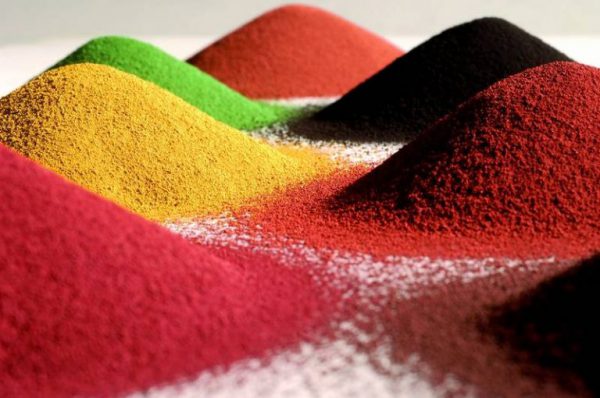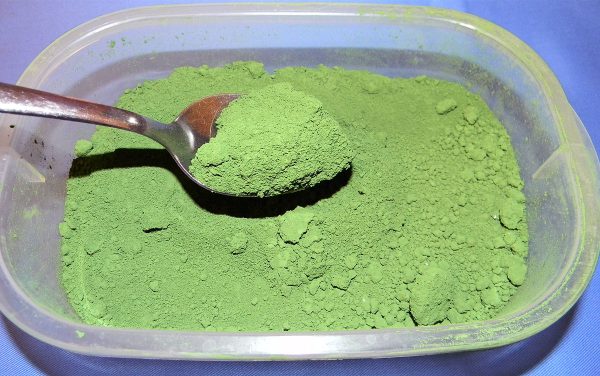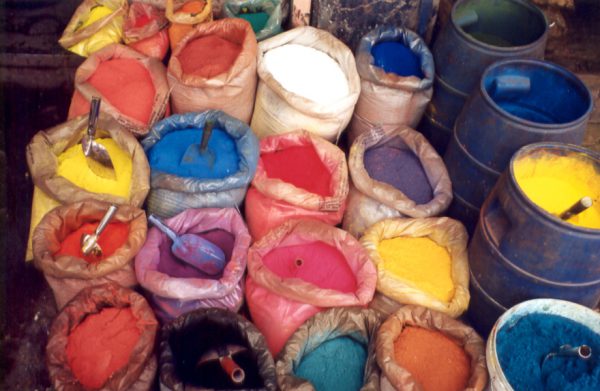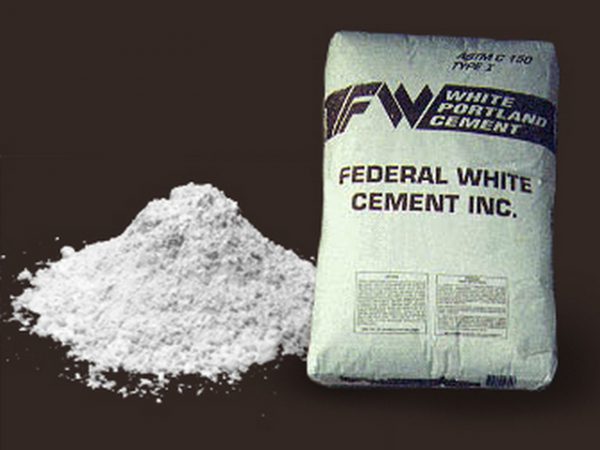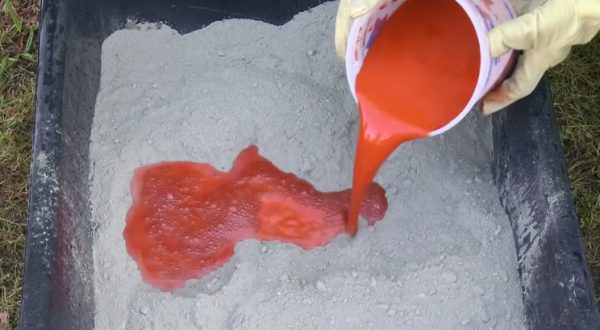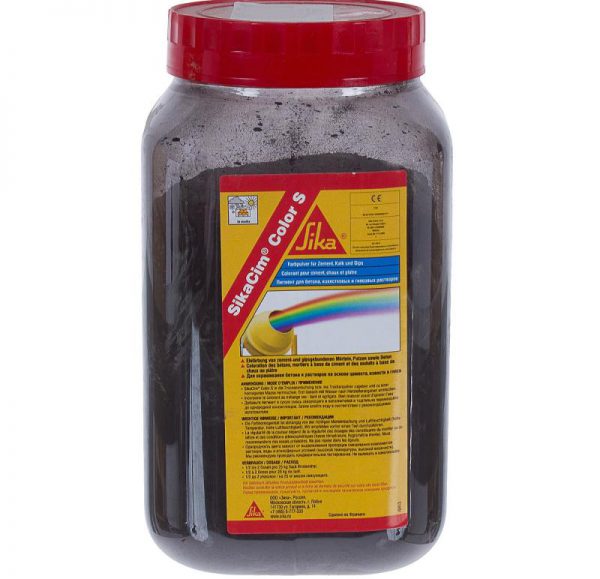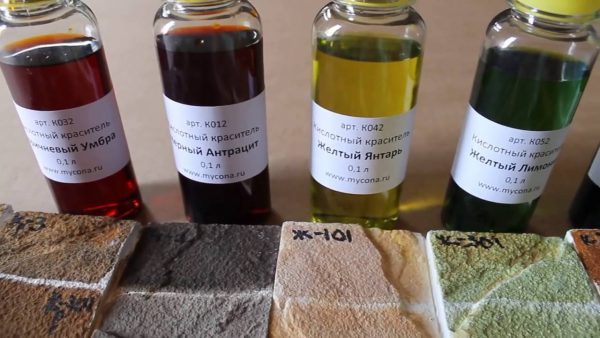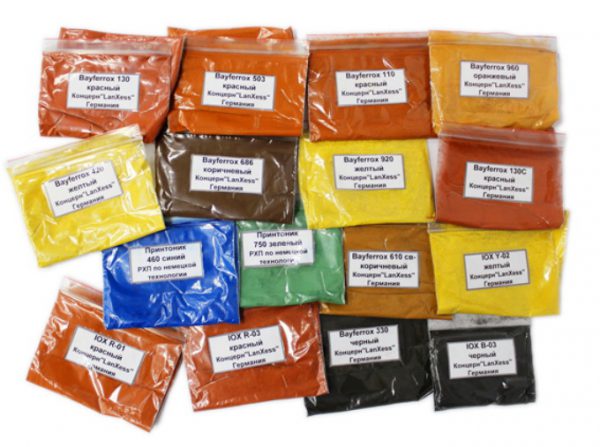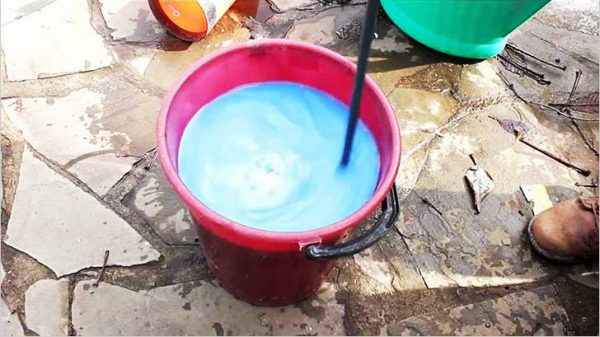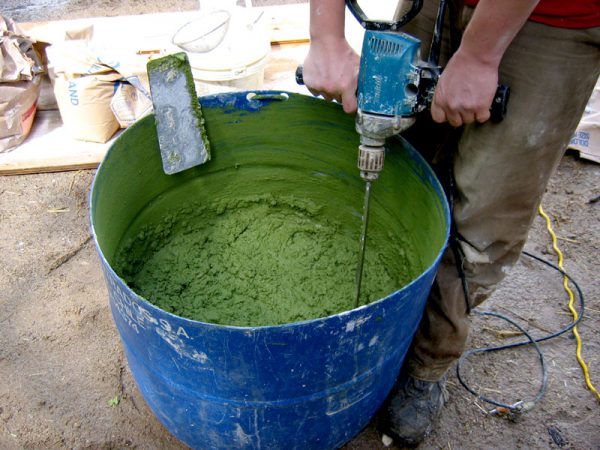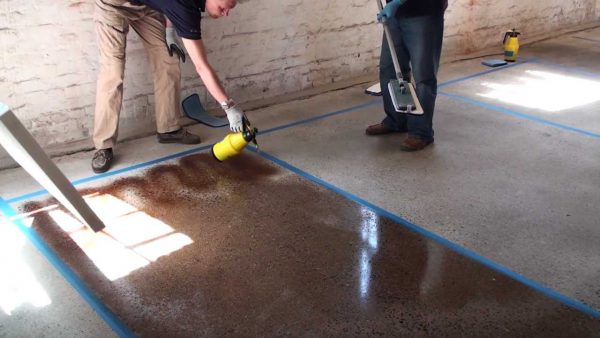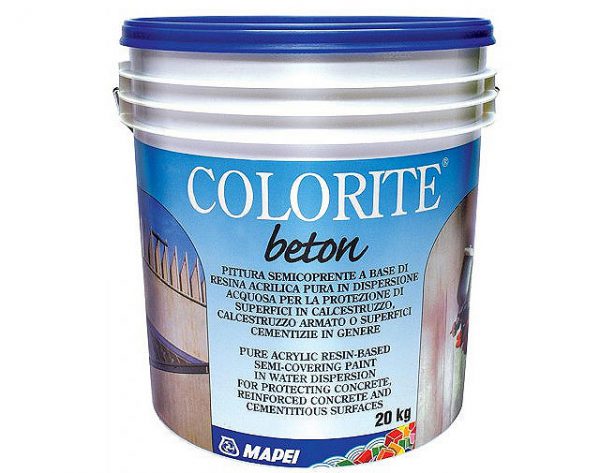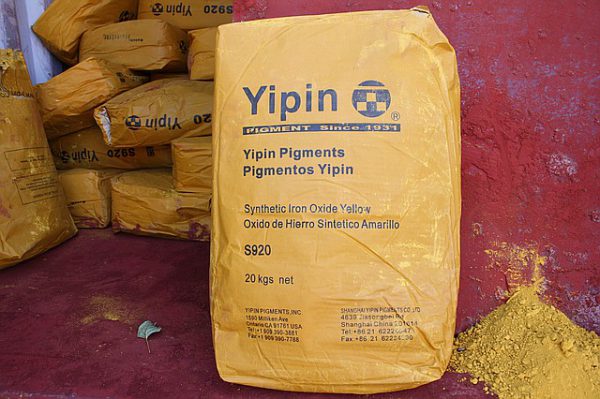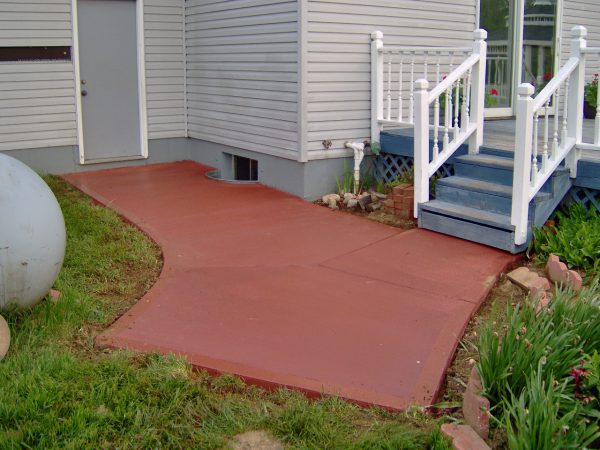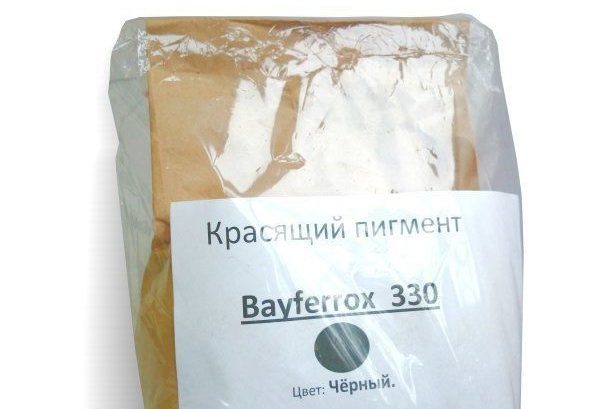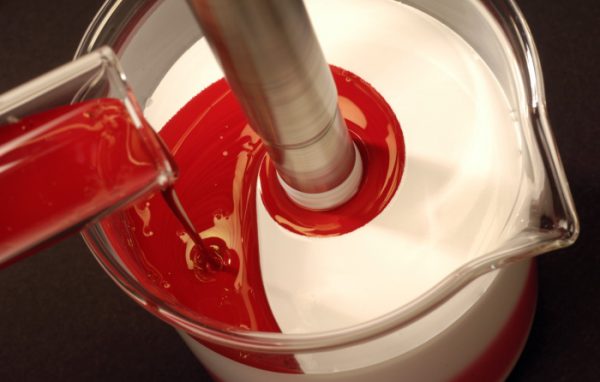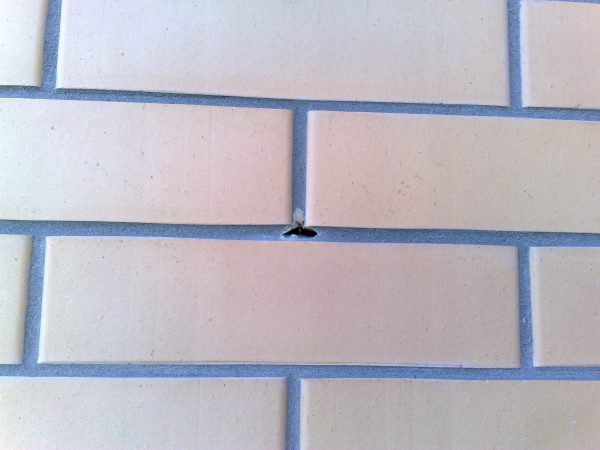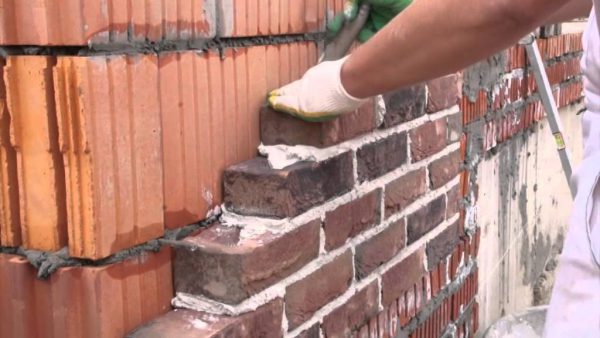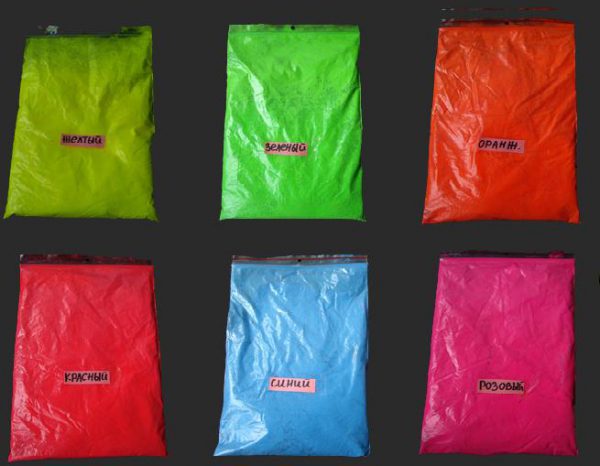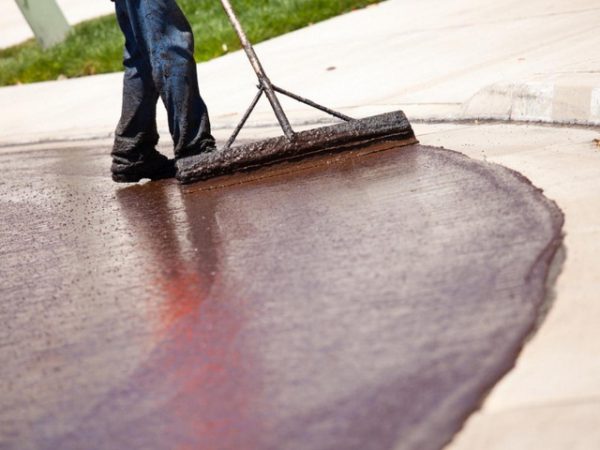Most often, concrete structures have a dull gray color. All because the material itself has exactly this shade. But now there are technologies for tinting cement mortar or painting the surface of finished products. The dye for concrete allows you to diversify the appearance of buildings and other structures, so painting methods are widely used in construction.
- Dyes for concrete
- The use of dye in concrete mix
- Pigment - what is it
- Types of pigments
- Pigment properties
- How are pigments produced - methods
- Colors
- Material characteristics
- Material structure
- Light fastness
- Types of Dyes
- Acid Dyes
- Acrylic Dyes
- Dry dyes
- Colored additives for concrete
- DIY dye making
- Preparation of concrete mix with dye
- Concrete painting
- Popular manufacturers
- Dyes for solution
- Characteristics of additives for the working mixture
- Advantages and disadvantages of the painted composition
- Cement mortar painting methods
- New technologies
- Preferred types of cement
- Shade selection
- Recommendations to the master
- Masonry Dyes
- Types of dyes for masonry mortar
- The choice - what to look for
- Preparation and use of the solution
- Innovations in the use of colored masonry mortars

Dyes for concrete
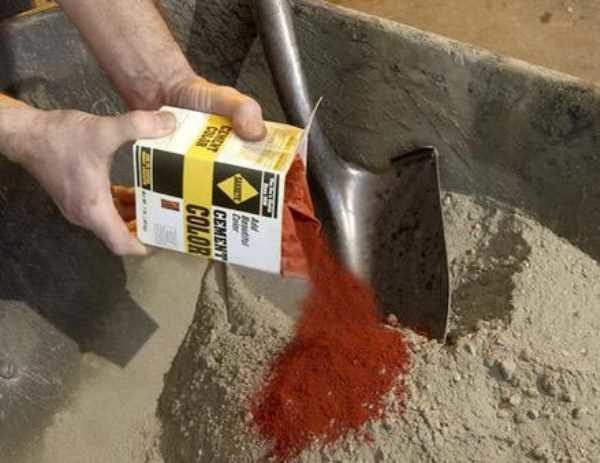
to contents ↑Colored concrete is a way to add variety to the urban landscape, to uniquely decorate a summer cottage or courtyard. Painting techniques are popular in the production of paving slabs, curbs, various reinforced concrete products, in the mixing of a solution of brickwork for walls.
The use of dye in concrete mix
The introduction of paint into the concrete mix gives the finished product an original appearance. Due to the large penetration depth, the coloring composition does not wear out, does not wear out for a long time. Even with some burning out of the surface, the structure of the composition does not change. Specialists point out only the high cost of work with painted concrete. However, tinting components are often added to mortars for pouring tracks, entrances, platforms, floors and other large areas.
to contents ↑Pigment - what is it
Pigment for concrete - an additive in the form of a dry powder, introduced into a concrete mixture or applied to a dried base in order to give the desired color. The pigment composition is also sometimes used to color a newly laid solution - this helps to reduce the cost of the product. Pigments after adding solvents, fixing agents and further drying become resistant to damaging factors.
to contents ↑Types of pigments
According to the method of obtaining powder pigments are artificial and natural (natural). By origin they are classified into organic and mineral. Pigments also vary in heat resistance, chemical resistance and color.
Pigments are of the following types:
- Natural.They are obtained by crushing lime, kaolin, chalk, ocher, manganese peroxide.
- Artificial. To obtain minerals and stones are subjected to heat treatment. Representatives - painting soot, burnt umber, titanium white, azure, chromium oxide.
- Metal. For their manufacture, metals are used (golden bronze, zinc dust, titanium oxide, iron oxide powder, aluminum powder).
- Acidic. Prepared on the basis of various acids, the result is pigments of blue, green, black and brown.
Pigment properties
All pigments should have a number of properties, and, to a sufficient degree. Otherwise, it makes no sense to paint concrete or the finished product - the surface will quickly lose its external gloss. Here are the main qualities of dyes:
- hiding power - the product should completely cover the white or gray tone of the base material;
- low oil absorption - this indicator should be no more than 40-100 units, the retention period of the color of the finished solution depends on it;
- resistance to corrosion, alkalis, ultraviolet radiation, temperature changes - these properties will seriously extend the life of the product;
- dispersion - powder compositions should be well distributed over the finished mixture, despite the dry state.
How are pigments produced - methods
In industrial conditions, pigments are produced from mineral or organic substances, enriching with various artificial additives. To save money, some people make pigments with their own hands. But you need to consider that it is not easy to make such a dye yourself, it is better to purchase the composition in finished form. If the dosages are violated, you can create the wrong color or even spoil the solution.
to contents ↑Colors
The final result of painting depends on the color of the cement. If the material is gray, then the solution will also turn grayish, muffled. For bright, saturated colors, you should buy white cement. Pre-knead a small amount of the solution, add a little pigment to achieve the desired shade. In the future, the calculated proportions are strictly observed, this will make the design uniform in tone.
The colors of pigments are most often limited to the basic gamut - red, blue, yellow, black, green. It is quite possible to make their combinations, so they get purple, orange and other secondary shades. To create a white solution, take the original white Portland cement, inject the same color filler. For some clarification of gray cement, titanium dioxide can be used.
Other factors also affect the color of the finished product:
- Shade of sand and other additives. It is worth using only light crushed stone or transparent quartz sand - they improve the brightness of pigments.
- Water-cement ratio. The more water introduced, the brighter the initial cement slurry will be.
- Concrete curing temperature. At a higher ambient temperature, crystals formed during the solidification of the mixture have a smaller size. Therefore, light is more diffused and the solution looks brighter.
- The percentage of pigmentation by weight of cement. The maximum allowable amount of tint in the solution is 8-10%. For highly coloring formulations, 5% is sufficient. Further, the color difference will be insignificant, but the properties of concrete itself are changing for the worse. There are also recommendations on the amount of pigment depending on the color: pastel tones - 1-3%, shades of medium intensity - 3-4%, saturated colors - 4-6% or more.
- Manufacturer. Different manufacturers of coloring compounds have unequal pigment quality, which must be taken into account when buying.
- Time. The remaining color will depend on the time the product is used. So, oxide pigments retain their color even after a long period. Nevertheless, most of the colors are a little faded as a result of ongoing chemical processes. On the product formed efflorescence - lime stains.
Material characteristics
The principle of action of the powder pigment is based on the absorption of light and the reflection of certain rays. Thanks to this, we see the shade of the finished design.
Most pigments are environmentally friendly, they can be used in the decoration of residential premises. As for the physical and chemical characteristics, we note the main ones:
- the residue on a sieve with a mesh size of 45 μm is 0.05-2.5%;
- pH 3-8;
- the proportion of water soluble salts is 0.4-0.8%.
All compositions are tested on reference samples before they go on sale. Manufacturers guarantee the quality of their products.
to contents ↑Material structure
Most pigments have a dry consistency. Colors in the form of liquid, emulsion, paste, microcapsules are much less commonly sold. The cheapest to use dry powders.
to contents ↑Light fastness
Pigments are lightfast. This is the ability of the coloring matter to retain a shade under the influence of ultraviolet radiation. Most natural pigments have high light fastness.
Types of Dyes
You can color concrete with the help of various types of dyes, which are prepared on the basis of pigments. It is important that the color scheme has a good penetration depth and a sufficient quality of fixation.
Acid Dyes
They are considered the most persistent and most common in construction. Such funds are safe for humans, environmentally friendly. They stain the solution or the finished structure as a result of a chemical reaction. The color scheme usually includes 8 standard tones that are easy to mix with each other.
to contents ↑Acrylic Dyes
Dyes of this type are bright and durable. They are often used to obtain colored concrete for pouring floors, applying to walls, in brickwork. Ready-made shades are sold in hardware stores. Acrylic is not harmful to humans, you can work with it indoors. To apply paint to the finished concrete, brushes, rollers, sprayers are used. Usually at least two layers of staining are performed.
to contents ↑Dry dyes
Such colors are represented by a wide variety of basic and already mixed pigments (ocher, white, umbra and others). Dry pigments are cheaper than the rest, so they are popular in everyday life. Means resist temperature differences, the action of the sun and precipitation. Before applying it is important to ensure that the concrete surface is painted for the first time.
Colored additives for concrete
Such colors are introduced into the cement at the stage of mixing the solution. They are liquid, powder or pasty. Pastel colors, light shades prevail. Dyes are not afraid of the effects of rain and sunlight, their service life is not less than that of the concrete structure itself.
to contents ↑DIY dye making
In order to please the result, you should choose only high-quality cement with the lightest initial color for work. It can easily be painted even with homemade dyes.
Pigment recipe:
- 0.2 l of calcium chloride;
- 7 liters of water;
- 30 g of laundry soap;
- 0.5 kg of dry lime paint of any shade;
- 1.5 liters of slaked lime fluff.
First you need to dilute lime in water, then add calcium chloride and paint. Separately grind the soap on a grater, dissolve in a small amount of water, introduce into the general solution. Strain the product to obtain a homogeneous liquid. It turns out about 10 liters of finished paint, which can be immediately injected into concrete.
to contents ↑Preparation of concrete mix with dye
In order for the cement to stain well, the dye obtained must be evenly distributed over it. To do this, add paint to the solution just prepared, until it even begins to thicken a little. Mixing should be done using a concrete mixer or mixer - manually the process will be delayed, and the effect may be worse. As soon as the streaks of paint cease to shine through the mass, it can be used for its intended purpose.
It is important to strictly observe the proportions of adding dye to concrete.If you violate the ratio, the finished structure will lose strength, will quickly crack. It is advisable to pre-knead and pour a small portion of the material to ensure its suitability. To improve adhesion and strength, to prevent cracks, plasticizers and water-retaining additives can be added to the mass.
The process of painting concrete proceeds as follows:
- before starting work, prepare a large container;
- mix the dry components of the solution;
- add water and dye, if it is a liquid substance;
- thoroughly mix the mass.
In the manufacture of the solution, not only cement and pigments are added, but also fixers, adhesive additives, if so conceived by the technology. Usually, to create a mixture, take 2.5 parts of sand, 1 part of cement, 4 parts of gravel, ¼ part of water, 2 parts of pigment. After hardening, depending on the type of pigment, you can make an imitation of natural stone, an aged surface or fill in the usual color mixture.
to contents ↑Concrete painting
This method is used in construction, and professionals also widely practice. Before work, it is important to prepare an already frozen surface. It is washed or cleaned with dirt, dust in a "dry" way, degreased with a solvent. Then the base is dried with a hairdryer or spray. For painting, such tools and devices are necessary:
- work clothes, glasses, gloves;
- masking tape;
- brush or roller;
- tray for paint.
Wearing protective clothing cannot be ignored, especially when using acid-based paints. Painting is done manually, but for large surfaces it is better to use a spray gun. Previously, all contact areas that will not be painted are pasted with tape. Apply one coat, allow to dry for at least 6 hours. Then you can apply a second coat of paint, let the coating dry completely (24 hours). During this time, a chemical reaction will occur, and the concrete surface will be painted in the required color.
At the end of the work, wash the concrete with cool water, wipe it with a cloth or sponge. As it dries, the real shade will be visible. It can be made deeper by applying special toppings, which, in addition, give shine and fix the dye, make it more resistant. Usually, up to 0.3 kg of paint in one layer is consumed per square meter of surface, but sometimes this figure is more.
to contents ↑A better result is obtained when using deep penetration formulations (up to 5 mm). Such products have the property of additionally protecting concrete from destructive factors. The corresponding mark on penetrating staining is always on the packaging of the material, so you should carefully read the information before buying.
Popular manufacturers
In stores, the pigments of the Nordix plant are often found, for example, black H-722, brown H-663 and others. MAPEI paints are also sold everywhere - they are suitable for concrete and facades, have high quality, and have a rich palette of shades. MAPEI's Elastocolor Paint line paints provide protection against temperature changes, do not crack, hide minor imperfections. The quality of products is also distinguished by the products of NPP GTS, Zinsser, and TeoChem.
to contents ↑Dyes for solution
More recently, there were no special requirements for the appearance of houses and other reinforced concrete products. Now concrete pigmentation is an indispensable component of the technology for the production of a huge assortment of goods for construction and decoration. Therefore, already at the stage of production of the solution, ready-made pigments are added to it, giving beautiful shades.
Characteristics of additives for the working mixture
Paints are diluted with solvents. For this purpose, you can use the following substances - white spirit, acetone, for acrylic colors - water. Important properties of pigments are:
- fraction size - the smaller the particle, the better the staining result, as well as the more effective the ability to block the gray shade of the base;
- resistance to light - special additives in the composition extend the life of the paint, do not allow it to quickly fade in the sun;
- inability to soak in water and oils.
Dry (powder) paints for the solution have excellent coloring ability and optimal particle size distribution. Most pigments are heat-resistant, withstand temperatures of more than +500 degrees, practically do not react to atmospheric exposure. They are used for the preparation of various types of concrete solutions, as well as for coloring ready-made regular and mosaic concrete. Pigments are introduced at the mixing stage of the mixture or spread on fresh concrete (rubbed with a spatula).
Liquid pigments are used for intense, uniform staining and imparting artificial stone structure. They are also UV-, weather-resistant, their price is much higher, but the color scheme is richer.
to contents ↑Advantages and disadvantages of the painted composition
The use of pigments during the mixing of the solution is considered to be preferable among professionals, since the entire mass is painted. Even cutting hardened concrete will not cause complaints, because all the details will look uniform in color. When abrasion of the surface, the overall color does not change, which serves as a huge plus.
Here are the other benefits of a cement-based painted compound:
- giving an original decorative look;
- wide range of shades;
- an opportunity to realize a design idea;
- reduction of facing costs;
- safety for man, nature;
- cost savings due to low pigment consumption;
- very saturated color.
The disadvantages of the methodology are also there. Due to the influence of the sun, even the most UV-resistant pigment turns a little yellow over time. Also, the use of pigments compared with the use of unpainted concrete will increase the cost of construction costs. Another disadvantage is the complexity of the work if you have to breed large volumes of colored concrete.
to contents ↑Cement mortar painting methods
There are several technologies to give concrete the desired color:
- the introduction into the finished composition of one selected pigment with subsequent pouring of the floor, structures;
- the addition of different pigments (the method is often used to fill tiles or other small products);
- the introduction of different shades of one color and the creation of the structure of artificial stone (with veins);
- staining the mold for pouring, followed by pouring unpainted concrete into it.
New technologies
The newest and most laborious methods of painting concrete with pigments are used mainly by professionals. Specialists create concrete that is close in texture and appearance to various stones - natural and artificial. To do this, mix different shades of pigments to obtain secondary tones - bright green, lemon, cherry, burgundy and others. In artisanal conditions it is very difficult to achieve such an effect; professional equipment is needed.
to contents ↑
Preferred types of cement
For the coloring of concrete, you can use any brand of cement, there are no restrictions. Nevertheless, the result will depend on the quality of the material, because not only the pigment determines the final effect. For the brightest colors use white, expensive cement. If muted tones are acceptable, you can buy cheaper gray Portland cement.
to contents ↑What to do if only dark (gray) material is purchased? It is possible to give concrete blue, gray, green, black, brown colors by adding appropriate pigments.The easiest way to make a shade of wet asphalt from such a composition. White cement will make pink, blue, beige concrete when connecting the right pigments.
Shade selection
Most often, in the coloring of concrete or to create secondary shades, the following pigments are used:
- green - chromium oxide;
- white - titanium dioxide;
- red - red iron oxide;
- yellow - yellow iron oxide;
- black - carbon black or carbon monoxide;
- brown - brown iron oxide.
With the help of such pigments, you can make other tones, which also stain the concrete solution. The use of some dyes, on the contrary, is not economically advantageous - they quickly lose their primary color in the sun (for example, blue phthalocyanine).
to contents ↑Recommendations to the master
All pigments should be sieved before being added to the solution. If the product contains large particles, they must be disposed of. Otherwise, dark streaks will appear in the concrete mass. Liquid dyes are filtered. It is necessary to add pigments to the solution until it acquires the necessary color, but not exceeding the maximum allowable amount.
Other tips for beginners:
- to get a juicy tone, mix different pigments;
- Before staining concrete, it must be washed well, all fat must be removed, otherwise the quality of work will be poor;
- The solution prepared with the addition of pigment must be allowed to stand for several minutes so that the coloring matter is completely dissolved.
Masonry Dyes
The masonry solution can also be given the necessary color, which is achieved by introducing pigments. On sale there are many dyes for masonry - Precolor, YIPIN, Perel, Fepren and others. Shades of the same color from different manufacturers are very different - it is worth choosing them according to individual needs. It is highly undesirable to use pigments of different brands on the same masonry - this can spoil the general appearance of the building, because the color of the seams will be different.
to contents ↑Types of dyes for masonry mortar
For this purpose, all the described types of pigments are suitable, as well as dyes created on their basis - acrylic, acidic and others. They stain lime, cement, cement-lime mortars. The proportion of paint in the total mass should not exceed 8%, otherwise the strength of the brickwork will decrease.
The choice - what to look for
The most important indicator is the color of the pigment. With it, you can highlight the seams or, on the contrary, make them invisible (if you use a dye in the tone of a brick). The pigment should strengthen the design, make the solution more resistant to the action of the sun, water, temperature extremes.
Also, when selecting dyes, their moisture retention rate is taken into account:
- low - 5-6% (for clinker bricks);
- average - 7-10% (for facing bricks);
- high - 10-15% (for silicate brick).
Given these parameters, you can reduce the risk of discoloration of pigments and the appearance of efflorescence spots on the surface of the joints. Most often, shades of pigments such as brown, yellow, pink, beige, white are used for masonry. Although you can use any other color.
to contents ↑Preparation and use of the solution
To make a lime mortar, 1 part of fine lime, 2 parts of sand and a sufficient amount of water are mixed. Cement-lime mortar includes cement and lime milk, as well as sand (1 part lime, cement and 4-6 parts sand).
At first, dry components are mixed, then water is poured so that the consistency is like that of soft butter (the rate of water can be determined by eye). After that, a pigment or liquid dye is added to the finished masonry solution. For mixing, it is better to use a concrete mixer. A small amount of components can be mixed manually, using a spatula, in a bucket or other container.
White is considered the classic color, it is obtained by adding slaked lime, zinc oxide or titanium. The latter option is the most expensive, but provides shade resistance for decades.To reduce costs, they often fill the entire masonry with an ordinary, gray solution, and color is placed only along the edges that will be visible.
to contents ↑Innovations in the use of colored masonry mortars
Manipulating the color of masonry or individual walls, sections of the wall will help to create unusual housing design options. A universal way to emphasize masonry is the use of contrasting shades. White seams in combination with any tone of brick, except yellow, will look especially bright.
Also, color solutions can mask the masonry joints, completely hide the wall structure. To do this, add pigments, giving the solution an absolute similarity to the tone of the brick itself. When cleaning the seams, they are well aligned so that they repeat the texture of the base material. You can, on the contrary, not give the wall solidity, but make an extruded pattern. For this, blocks of bricks are laid in a special way.
Also, experts apply the following new techniques when creating spectacular brickwork:
- adding finely ground glass fluorescent powder to the solution to glow the joints against a dark brick;
- the introduction of pigments that change color depending on the ambient temperature.
When choosing dyes, you need to make sure that they are suitable for tinting a solution. Unscrupulous manufacturers replace non-ferrous metal salts with aniline dyes, which are washed out and burn out literally in a season. Only real pigments will provide a beautiful view of buildings and will last a long time - do not save on quality!

